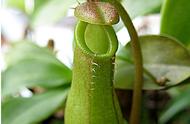益生菌是怎么提取出来的?
益生菌从何而来?
益生菌是一种有益菌,一般根植于人体的体内,对人体某一部位的菌群起着调节作用。一般情况下人体内就富含益生菌,同时也可以通过服用一些益生菌产品来摄取益生菌。益生菌是一种有益菌,它可以促进人体肠道的蠕动,促进消化。同时,它也有提高人体免疫力,保持肠道内菌类平衡的作用。

益生菌到底是怎么来的哪?
1、固体表面发酵法:是把固体表面培养的菌泥与载体按比例混合经干燥制成。此法产量低,劳动强度大,易受杂菌污染,不适于工业化生产,投资少。
2、大罐液体发酵法:其工艺流程为,菌种接种培养→种子罐培养→生产罐培养→排放培养液加入适量载体→干燥→粉碎→过筛→质检→益生素产品。此法适于工业化生产,便于无菌操作,但成本高。
酸奶的益生菌是从哪里提取的?
酸奶的益生菌都是从奶制品中提取出来的。
酸奶中常见的益生菌主要是保加利亚乳杆菌、嗜热链球菌、嗜酸乳杆菌、双歧杆菌、干酪乳杆菌、鼠李糖乳杆菌。保加利亚乳杆菌和嗜热链球菌是酸奶的基础发酵菌,酸奶的粘性和酸度,就是这两种菌的相互作用结果。保加利亚乳杆菌是从奶制品中提取得到,而嗜热链球菌是在加热过程中发现的。
双歧杆菌是人体长寿菌,从母体婴儿的粪便中提取的菌种。人体双歧杆菌的存量随着年龄的增长不断减少。一般,刚出生的时候,双歧杆菌的量最多,占肠道菌群的60%,60岁之后,只有7.9%左右。据研究表明,双歧杆菌有治疗慢性腹泻、便秘,防治肿瘤,保护肝脏等作用。
How are probiotics extracted? Where do probiotics come from? Probiotics is a kind of beneficial bacteria, which is generally rooted in the human body and plays a role in regulating the flora in a certain part of the human body. Generally, the human body is rich in probiotics, and probiotics can also be ingested by taking some probiotic products. Probiotics is a kind of beneficial bacteria, which can promote human intestinal peristalsis and digestion. At the same time, it can also improve human immunity and maintain the balance of intestinal bacteria. How did probiotics come from? 1. Solid surface fermentation: it is made by mixing the bacterial sludge cultured on the solid surface with the carrier in proportion and drying. This method has the advantages of low output, high labor intensity, easy to be polluted by miscellaneous bacteria, unsuitable for industrial production and low investment. 2. Large tank liquid fermentation method: the process flow is as follows: bacteria inoculation and culture → seed tank culture → production tank culture → discharge the culture medium and add an appropriate amount of carrier → drying → crushing → screening → quality inspection → probiotics products. This method is suitable for industrial production, easy for aseptic operation, but the cost is high. Where are the probiotics extracted from yogurt? Probiotics in yogurt are extracted from dairy products. The common probiotics in yogurt are mainly Lactobacillus bulgaricus, Streptococcus thermophilus, Lactobacillus acidophilus, Bifidobacterium, Lactobacillus casei and Lactobacillus rhamnosus. Lactobacillus bulgaricus and Streptococcus thermophilus are the basic fermentation bacteria of yogurt. The viscosity and acidity of yogurt are the result of the interaction between these two bacteria. Lactobacillus bulgaricus is extracted from dairy products, while Streptococcus thermophilus is found during heating. Bifidobacterium is a long-lived bacterium in human body, which is extracted from the feces of mothers and infants. The stock of Bifidobacterium in human body decreases with age. In general, the amount of bifidobacteria is the largest at birth, accounting for 60% of the intestinal flora. After the age of 60, it is only about 7.9%. According to the research, Bifidobacterium can treat chronic diarrhea and constipation, prevent and treat tumors, and protect the liver.
,














